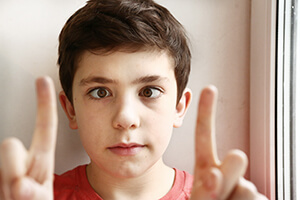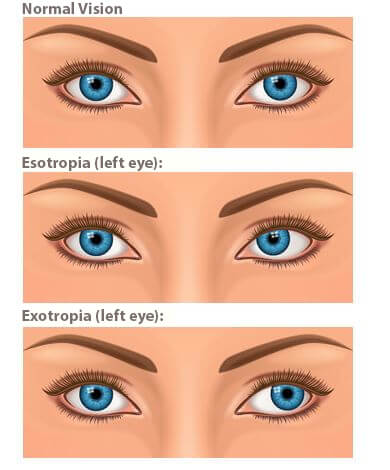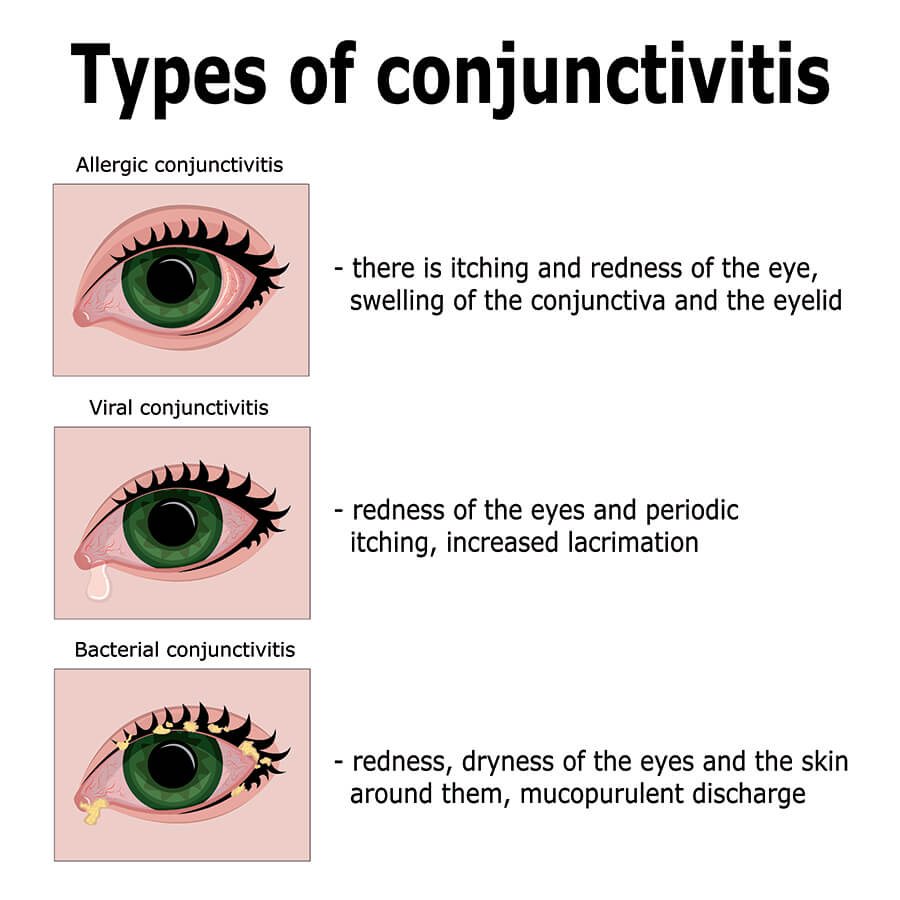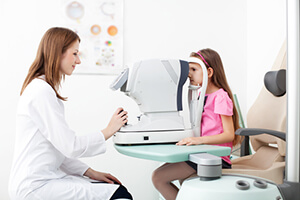Strabismus Amblyopia Pink Eye Allergies
Strabismus

Strabismus, or misalignment of the eyes, is a common condition encountered in the pediatric population, affecting 1 in 25 children. It is an important disorder as it can disable sight in one eye.
Early detection and treatment of strabismus is essential to prevent permanent visual impairment. Of children with strabismus, 30% to 50% will develop secondary visual loss or amblyopia. Proper alignment of the eyes must occur at an early stage of visual development to allow these children a chance to develop normal binocular vision.
If strabismus is detected, corrective treatment can sometimes be attained by nonsurgical methods, occlusion therapy, patching, and prescription eyeglasses. However, if these methods fail to properly align the eyes, eye muscle surgery may be recommended.
Although the strabismus surgeon in practice uses a wide variety of surgical techniques to correct strabismus, the most common procedures are weakening or strengthening of the action of the muscle. Depending on the magnitude of the eye deviation, the procedure may be performed on one or both eyes, which keeps the movements of the eyes as normal as possible.
Strabismus surgery is generally effective in correcting ocular misalignment, especially when it is performed early enough to allow the brain to use the eyes together and develop a 3-dimensional vision. While the idea of eye muscle surgery can be alarming to some parents, both the procedure and the recovery time are relatively quick.
The most common type of strabismus is esotropia or an inward turning of the eye. This typically occurs around age 2 to 3 when a child is learning to focus. Many times this can be corrected with glasses, but in other cases, surgical correction may be needed.
The second most common type of strabismus is exotropia or an outward turning eye. This normally occurs when a child is focusing on objects at a distance.
This may occur intermittently, especially when a child is tired or daydreaming. There are several treatment options depending on the severity of the problem. Vision Therapy or Orthoptic Therapy is frequently used for this type of strabismus.

At Total Eye Care, we treat children and adults with double vision, turning of the eyes, and eye movement disorders.
We have extensive experience in medical and surgical correction of misaligned eyes in adults and children and have been sought out for our proficiency in this area.

Amblyopia
Amblyopia occurs in 1 of every 50 children. This disorder, commonly known as ‘lazy eye,’ is a loss of vision due to the child’s brain turning off visual development. Amblyopia can result from misalignment of the eyes, the need for glasses, or cataracts that block light rays from entering the eye.
Depending on the type and cause of amblyopia, vision can be improved with early treatment. Patching of the good eye, forcing the brain to use the bad eye, and glasses are the most common treatments for this condition.
Total Eye is pleased to offer Luminopia to treat amblyopia in children.
Luminopia is the first FDA-approved* binocular therapy for amblyopia. With Luminopia, patients can choose from more than 700+ hours of popular 2-dimensional TV shows and or movies to watch within a commercially available virtual reality (VR) headset. Software algorithms take the content, modify it in real-time, and present it differently to each eye to rebalance the input to the brain, which has been shown to improve vision over time in patients with amblyopia. For more information about Luminopia, please see your provider.
Pink Eye
The term ‘Pink Eye’ is used to describe a type of conjunctivitis. The conjunctiva is the outermost layer of the eye and is inflamed in this condition. There are many types of conjunctivitis but the most common causes are allergic, viral, and bacterial. The different forms of conjunctivitis require different approaches to treat them.

Allergic conjunctivitis is typified by an ‘itchy’ feeling and is prevalent in our patient population with allergies. Symptoms may be seasonal with fluctuations in their severity over certain months.
Viral conjunctivitis is very common, especially in children. Viral conjunctivitis is usually associated with a recent cold or flu or sore throat. Supportive therapy and artificial tears are a common treatment.
Bacterial conjunctivitis is caused by various bacteria strains such as staphylococcus and streptococcus. The severity of the infection depends on the type of bacteria involved, and the treatment will vary accordingly.
For the latter two types of conjunctivitis, it is important to note that they are very contagious and caution of transmission should be taken. Washing hands, disinfecting surfaces, routine eye care, keeping your hands away from your eyes and face, and not sharing items such as towels, hats or, glasses, are all ways to decrease the chance of spreading the infection.
Vision Therapy / Orthoptic Therapy
 Does your child suffer from eyestrain, headaches, or double vision? Does he/she avoid near work or seem to have difficulty with learning and reading? You or your child’s vision problems may not be solved with just a pair of glasses.
Does your child suffer from eyestrain, headaches, or double vision? Does he/she avoid near work or seem to have difficulty with learning and reading? You or your child’s vision problems may not be solved with just a pair of glasses.
The problem may lie in the relationship of how your eyes work together and if so, vision therapy may be the answer you’ve been looking for! Vision therapy is most successful in correcting convergence insufficiency, a condition in which the eyes have difficulty “crossing” to see a near target. All patients with reading problems should have a comprehensive eye exam to check for this condition and other problems with eye misalignments.
Many children with convergence insufficiency are misdiagnosed by teachers or pediatricians and are labeled with reading disorders and/or attention deficit disorders.
By correcting the abnormal coordination of their eyes with vision therapy, many children will improve their reading ability and attention span. Vision therapy is also useful in correcting many cases of intermittent strabismus, a disorder in which one or both eyes occasionally turn either out or in. In addition, some accommodative (focusing) problems can also be treated with vision therapy.
These conditions can be diagnosed during a full routine eye exam with one of our doctors. At Total Eye Care, our doctors will assess the need for glasses and the overall health of the eyes as well as the alignment and focusing ability of you or your child’s eyes. If the doctor feels your symptoms are related to an eye muscle or focusing problem, vision therapy may be recommended.
Vision therapy involves teaching various exercises to improve the brain’s ability to align the eyes while increasing the brain’s ability to focus the eyes.
The exercises stimulate the binocular and accommodative systems of our visual pathway to work harder together and overcome the focusing issues that can cause discomfort.
By using the natural reflexes in the brain, vision therapy is similar to physical therapy and strengthens the coordination between the brain and eyes allowing them to function better together.
Vision therapy and eye muscle exercises can be very effective at treating symptoms. The exercises our doctors create for your specific plan are completed over a few months’ time. Many patients notice a decrease in symptoms in less than three months and are able to enjoy a more comfortable lifestyle after only a few training sessions.













